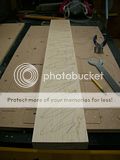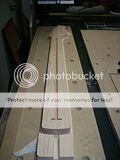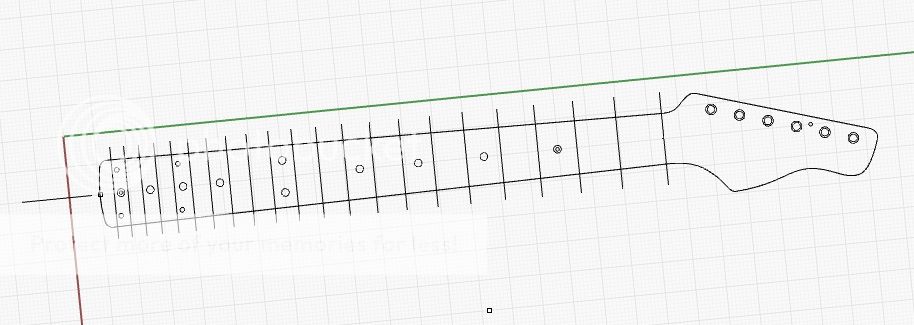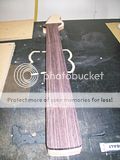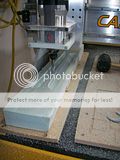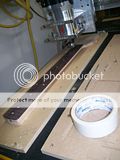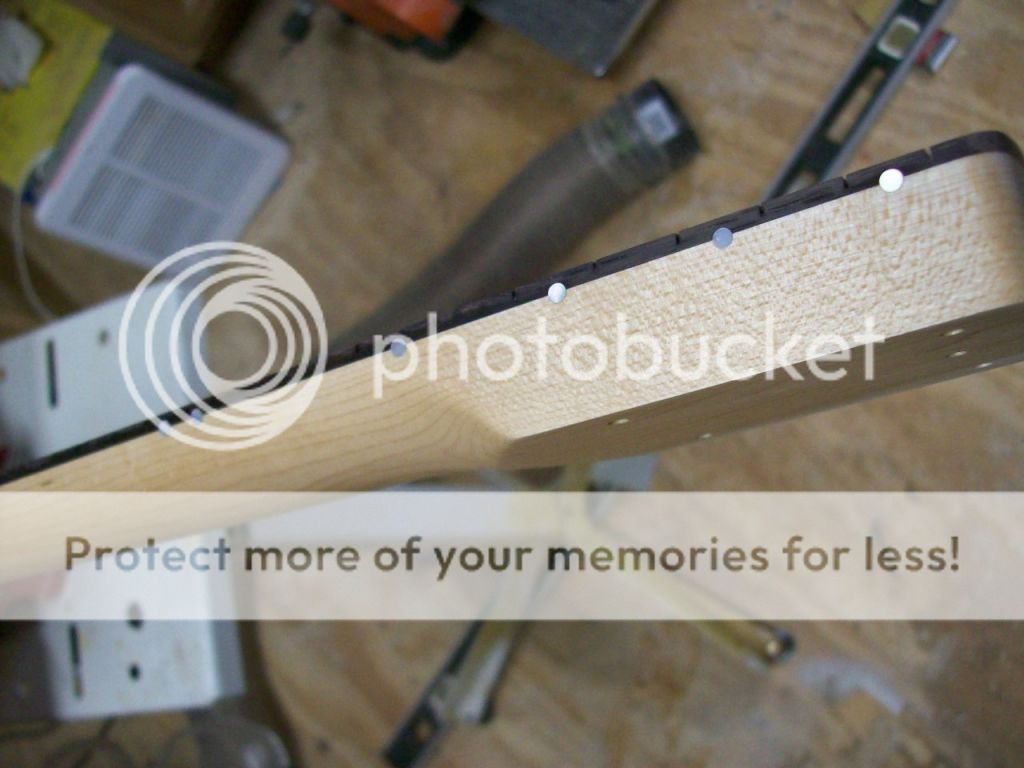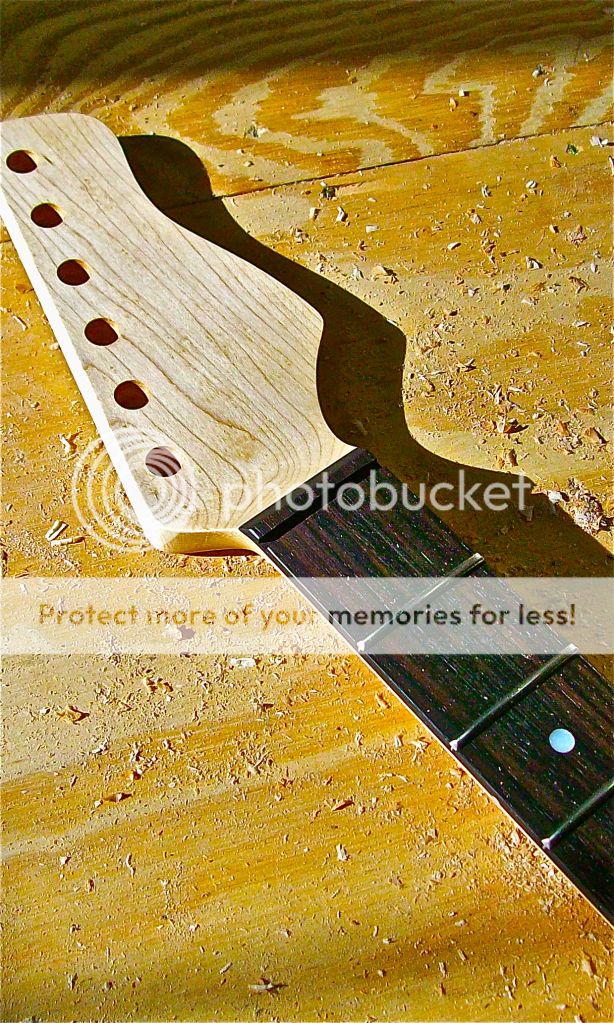ratter
New member
Episode 1 can be found here.
Let's tackle Episode 2.
This one is still very much in progress so it will have to play out over the coming weeks but a lot is already done.
Episode 1 was a pretty bog-standard Tele copy. This time we're going off the reservation a little bit and building a strat style with my own original body and headstock shapes. We'll go from raw wood all the way through to case candy.
The target is a takeoff on a mid to late 60's style rosewood board strat. But that's just a rough starting point.
The targeted specs are:
Alder body
Maple neck with rosewood board
Thin C shape, 21 frets, MOP dot inlays
6-screw vintage trem
Either SSS or HSS...haven't decided yet
First step...the neck...
Let's tackle Episode 2.
This one is still very much in progress so it will have to play out over the coming weeks but a lot is already done.
Episode 1 was a pretty bog-standard Tele copy. This time we're going off the reservation a little bit and building a strat style with my own original body and headstock shapes. We'll go from raw wood all the way through to case candy.
The target is a takeoff on a mid to late 60's style rosewood board strat. But that's just a rough starting point.
The targeted specs are:
Alder body
Maple neck with rosewood board
Thin C shape, 21 frets, MOP dot inlays
6-screw vintage trem
Either SSS or HSS...haven't decided yet
First step...the neck...

